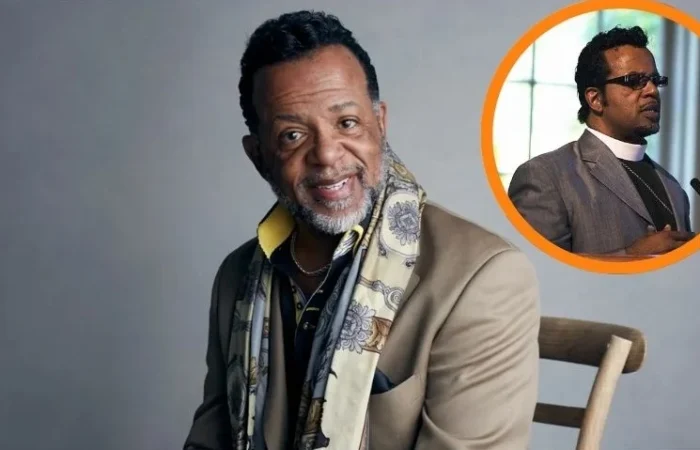In a tragic tale that shocked the quiet town of Vancouver, the name Dylan Ray Peterson became synonymous with a heinous crime that would forever change the lives of two innocent people and their families. On a fateful day in January 2007, Peterson picked up the phone and made a distressing 911 call, setting into motion a chain of events that would reveal his dark secrets and culminate in his incarceration. This article delves into the intricate details of the dylan peterson murder case, exploring the impact of the crime, the subsequent investigation, and the broader conversations it ignited about mental health, crime, and justice.
Key Takeaways
- The Dylan Peterson Murder case in Vancouver shocked the quiet town, revealing a heinous crime with intricate details that emerged during the investigation.
- There is a scarcity of information about Peterson’s early life, leaving room for speculation about potential triggers and an understanding of his criminal psychology.
- Dylan Ray Peterson’s 911 call in January 2007 confessed to the murders of Mathew Eric Nagle, 15, and his mother, Sandra J. Torell, 45, which led to his immediate arrest.
- A mental health evaluation post-arrest uncovered a history of depression and suicide attempts, sparking important discussions on mental health’s role in the criminal justice system.
- The crime’s impact extended beyond the victims’ families, affecting Vancouver and emphasizing the need for mental health vigilance to prevent future tragedies.
Early Life and Scarce Details:
Scant details are available about Dylan Ray Peterson’s early life and upbringing. This lack of information is not uncommon in criminal cases and often leads to speculation about the potential triggers that drive individuals to commit such heinous acts. Speculating about his background, those who knew him described Peterson as a loner, a young man who kept to himself, with little to no insight into his personal life or any potential motives for his future actions. This mystery surrounding his early life only adds to the intrigue and complexity of the case, highlighting the importance of understanding criminal psychology and the factors that shape an individual’s path towards violence.
The Horrific Dylan Peterson Muder:
On a chilly January morning in 2007, the peacefulness of Vancouver was shattered by a desperate 911 call. On the phone, a distraught Dylan Ray Peterson confessed to having murdered two people. The victims were soon identified as 15-year-old Mathew Eric Nagle and his mother, 45-year-old Sandra J. Torell. The crime scene, a duplex where Mathew resided with his family, became the epicenter of a grisly investigation. It was later revealed that Peterson had been temporarily staying with the Nagle family, a decision that would have fatal consequences.
Arrest, Legal Proceedings, and Sentencing:
Swiftly after his call, authorities arrested Dylan Ray Peterson and charged him with two counts of first-degree murder. Court documents painted a grim picture, indicating that Peterson had acted alone in the brutal stabbing deaths of Nagle and Torell. In a strategic move, he pled guilty, thereby avoiding the possibility of facing aggravated murder charges and the potential death penalty. The plea deal reflected the severity of his crimes, resulting in a prison sentence of over 57 years.
Mental Health Evaluation and its Complexities:
A critical aspect of the case emerged during Dylan Ray Peterson’s mental health evaluation post-arrest. Reports revealed a troubling history of depression and multiple suicide attempts, bringing to light the complex interplay between mental health issues and the criminal justice system. This evaluation underscored the importance of addressing mental health with sensitivity and urgency, both during legal proceedings and in broader societal contexts. It sparked discussions on how such issues should be navigated within the justice system, impacting sentencing and rehabilitation approaches.
| Mental Health Evaluation Aspects |
|---|
| History of Depression |
| Multiple Suicide Attempts |
| Complex Intersections with Criminal Justice |
| Sentencing and Rehabilitation Considerations |
Impact and Aftermath:
The repercussions of Dylan Peterson murder extended far beyond the initial shockwaves. The Vancouver community was left reeling, particularly the friends and family of the victims, who bore the brunt of the tragedy. During the emotional sentencing, loved ones of Nagle and Torell expressed their profound grief and the indelible void left by their losses. This case served as a stark reminder of how mental health struggles, when left unaddressed, can lead to devastating outcomes, emphasizing the need for vigilance and intervention.
A Closed Legal Chapter, But an Ongoing Conversation:
While the legal chapter of Dylan Peterson murder drew to a close with his sentencing, the broader conversation it ignited remains open and ongoing. This case became a catalyst for discussions on how societies can better address the underlying factors that propel individuals towards committing violent acts. It prompted a reexamination of the criminal justice system and how it intersects with mental health, sparking debates on justice, rehabilitation, and support for those affected by such tragedies.
Vancouver Mourns:
The impact of the crime resonated deeply within the Vancouver community, as friends and family of the victims struggled to come to terms with their devastating losses. During the court proceedings, Sandra J. Torell’s mother, Betty Montgomery, poignantly expressed her sorrow, recalling the joy and laughter her daughter brought into her life. Mathew Eric Nagle’s longtime friend, Whitney Lang, described her bond with Mathew, stating, “He was my little brother, my big brother, my other half,” highlighting the irreplaceable void created by his absence. The raw emotions laid bare in the courtroom underscored the profound impact of Peterson’s actions and the enduring grief of those left behind.
A Plea Deal and the Road to Healing:
In a bid to avoid the death penalty, Dylan Ray Peterson agreed to a plea deal, pleading guilty to two counts of first-degree murder. As part of the agreement, he accepted a prison sentence of over 57 years, a decision that brought some measure of closure to the victims’ families. In a heart-wrenching display, Peterson’s own family, including his mother, sisters, and brother, traveled from Idaho to attend the sentencing, offering tearful apologies to the Nagle and Torell families. Their presence served as a stark reminder of the far-reaching consequences of Peterson’s actions, affecting not just the victims but also those closest to the perpetrator.
Conclusion:
The case of Dylan Peterson murder is a grim reminder of the destructive nature of crime and the profound impact it can have on individuals, families, and communities. It underscores the critical importance of addressing mental health issues and recognizing the underlying factors that can drive individuals towards violence. As we reflect on this tragic tale, it serves as a call to action, urging us to prioritize intervention, support, and justice, with the hope of preventing similar tragedies and fostering healing for those affected.








No Comment! Be the first one.